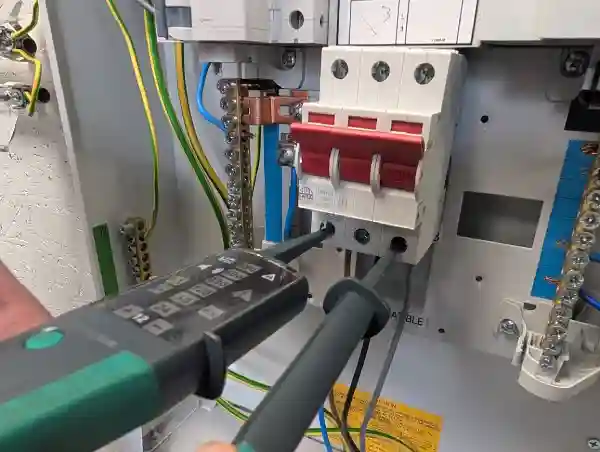
As an experienced lecturer with over 20 years of experience in electrical training, I can’t stress enough how crucial the skill of safe isolation is for every electrician. Whether you’re a student starting your Level 2 C&G 2365 qualification or advancing onto Level 3 and even the prestigious 2391 Inspection and Testing qualifications, mastering safe isolation procedures is not just vital—it’s legally required.
At Learn Trade Skills, we have trained hundreds of electrical students from Hertfordshire, Cheshunt, Enfield, and beyond, and today I’m sharing with you a comprehensive guide on how to perform safe isolation correctly and safely.
Safe isolation ensures that the electrical circuit you intend to work on is completely ‘dead’—meaning there’s no risk of electric shock or injury. Working on an isolated circuit isn’t just good practice; it’s mandatory under Regulation 13 of the Electricity at Work Regulations (EAWR) 1989. If live testing is required, Regulation 14 of the EAWR 1989 will guide you accordingly.
Here’s the step-by-step procedure that we teach at Learn Trade Skills:
Before starting, always obtain permission from the responsible person or property owner. Clearly communicate your intent and ensure everyone involved knows the circuit will be isolated.
Turn off the circuit breaker or isolator to remove the electrical supply. Ensure you clearly identify the correct circuit before isolation.
Always use a GS38-compliant voltage indicator. This device is specifically designed to safely and accurately confirm the absence of voltage.
Verify your voltage indicator works properly by testing it on a proving unit. This critical step ensures your indicator is functioning before testing circuits.
Depending on the circuit, you’ll follow different testing procedures:
Perform these three tests:
Perform these ten tests thoroughly:
After testing, reconfirm your GS38 voltage indicator’s functionality by testing it again on the proving unit. This double-check confirms the accuracy of your previous tests.
Securely lock off the isolator or breaker using a lock-off kit to ensure nobody can inadvertently re-energise the circuit. Clearly label it with your details, date, and reason for isolation.
Note: Locking off the isolator/breaker can alternatively be carried out immediately after isolation (step 2), before voltage testing.
Safe isolation is fundamental for your safety, compliance with regulations, and essential for passing key assessments within your electrical qualifications:
By practising meticulous safe isolation, you significantly reduce the risks of electrical accidents and comply with UK safety legislation, setting you apart as a skilled, reliable electrician.
At Learn Trade Skills, based in Hertfordshire and serving students from Cheshunt, Enfield, and surrounding areas, we offer comprehensive electrical training courses covering safe isolation techniques, inspection, testing, and certification. Our hands-on, practical training ensures you learn the skills necessary to excel in your career.
Q: Why is safe isolation mandatory?
A: Safe isolation protects electricians and others from potentially lethal electric shocks and injuries. It’s legally required under EAWR 1989.
Q: What is a GS38 voltage indicator?
A: A GS38-compliant voltage indicator meets specific UK safety standards, ensuring accurate and safe voltage testing.
Q: Can I isolate a circuit without permission?
A: No, always obtain permission first to ensure safety and avoid misunderstandings.
Q: Why is the proving unit important?
A: The proving unit verifies the correct operation of your voltage indicator, ensuring your safety before starting tests.
Master the safe isolation procedure now—your safety and career depend on it. If you’re in Hertfordshire, Cheshunt, Enfield, or nearby, Learn Trade Skills is here to support your journey to becoming a qualified, responsible electrician.
Sezai Aramaz is the esteemed founder of Learn Trade Skills, boasting over 40 years of experience in the electrical industry in the UK. With two decades dedicated to educating future electricians, he served as an Electrical Installation Lecturer and Assessor. Aramaz's expertise and commitment have contributed significantly to the growth and proficiency of aspiring tradespeople in the field.
“Lorem ipsum dolor sit amet, consectetur adipiscing elit. Ut pretium tristique purus nec consectetur. Nulla feugiat eget tellus aliquam scelerisque. Sed eget luctus enim, sed mattis enim. Lorem ipsum dolor sit amet, consectetur adipiscing elit. Ut pretium tristique purus nec consectetur. Nulla feugiat eget tellus aliquam scelerisque. Sed eget luctus enim, sed mattis enim.Nulla feugiat eget tellus aliquam scelerisque. Sed eget luctus enim, sed mattis enim. Lorem ipsum dolor sit amet, consectetur adipiscing elit. Ut pretium tristique purus nec consectetur. Nulla feugiat eget tellus aliquam scelerisque. Sed eget luctus enim, sed mattis enim.”
William Goss
Electrician course
11/11/2024